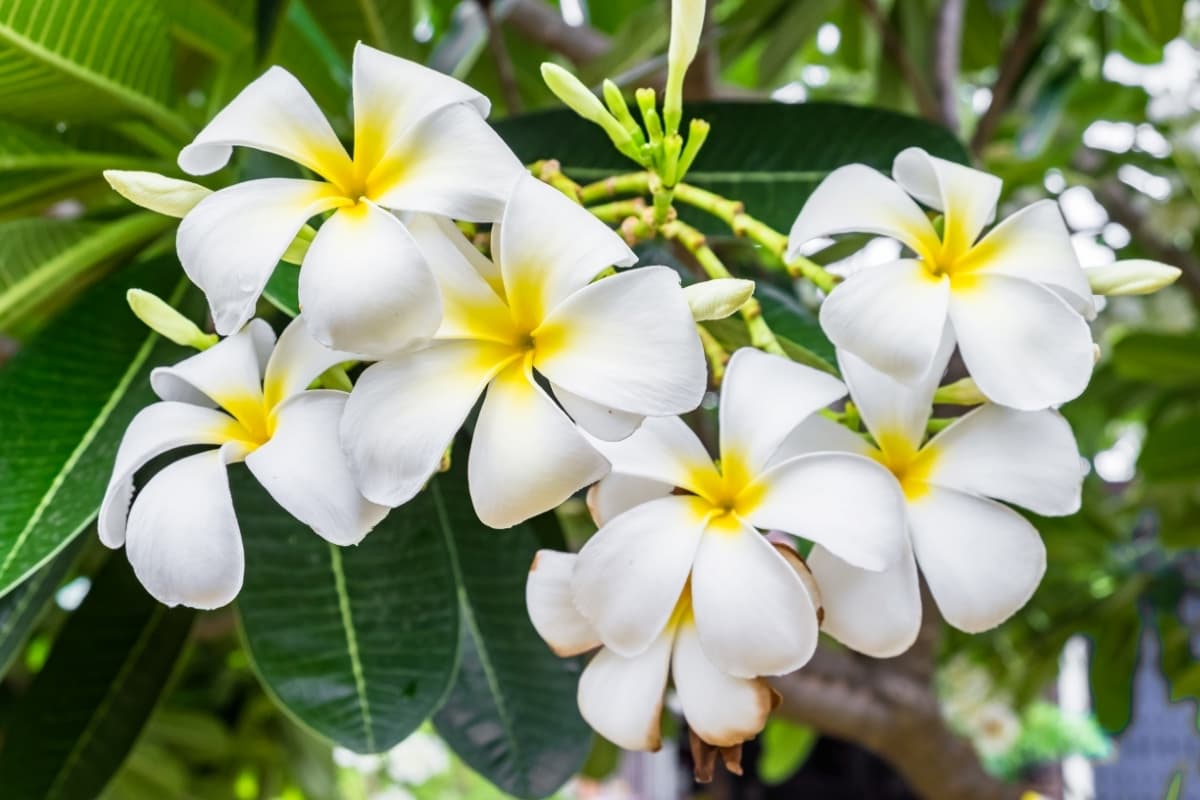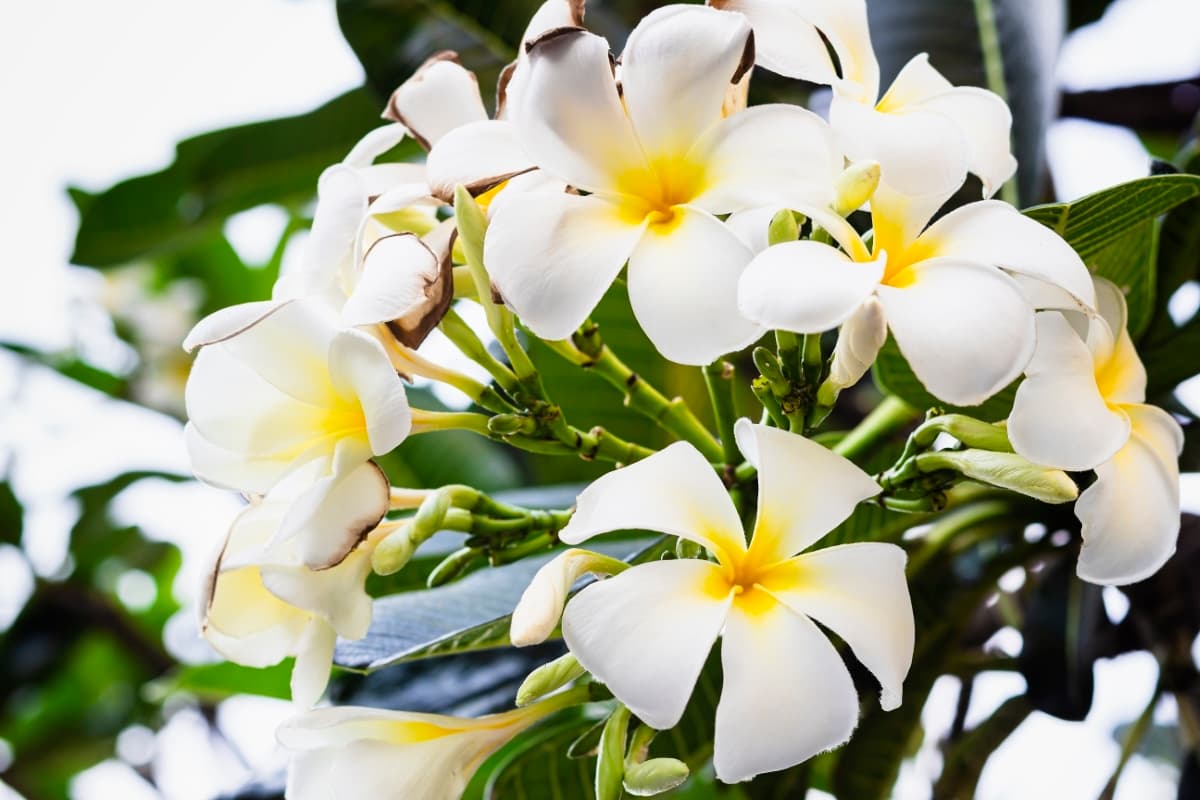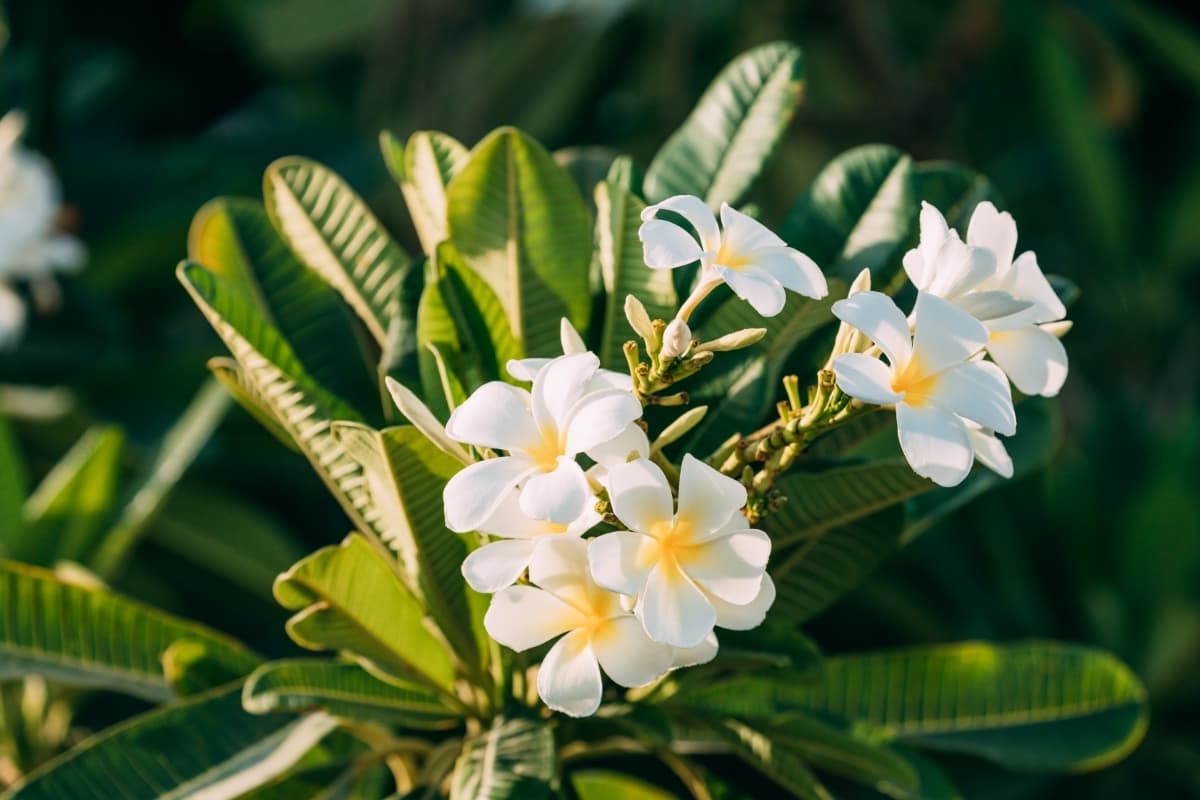Frangipani flowers, also known as plumeria, are the best addition to any garden or indoor space. Their delicate petals in shades of white, pink, and yellow have a sweet fragrance that captivates the senses. Caring for a potted Frangipani plant can be a rewarding experience. By understanding the blooming process and addressing any potential issues that may hinder blooming, you can help your Frangipani thrive and produce beautiful flowers.

Remember to be patient and consistent in your care routine, as these tropical plants require time to adjust and bloom. With the right conditions and attention to detail, you can enjoy stunning Frangipani blooms in your home or garden.
9 Key Reasons Your Potted Frangipani Won’t Flower
Lack of Sunlight
One of the most common reasons why your potted Frangipani is not flowering is due to a lack of sunlight. Frangipanis are sun-loving plants that thrive in bright, direct sunlight for several hours a day. If your plant is not receiving enough sunlight, it may struggle to produce blooms. Make sure to place your Frangipani in a spot where it can receive at least 6 hours of sunlight daily. If you notice that your plant is not blooming as expected, try moving it to a sunnier location. Remember that proper sunlight exposure is crucial for the overall health and blooming potential of your potted Frangipani.
Overwatering or Underwatering
Overwatering or underwatering your potted Frangipani can be detrimental to its blooming potential. Frangipanis prefer well-draining soil that allows excess water to escape easily. When you overwater your plant, the roots may suffocate as they become waterlogged, leading to yellowing leaves and bud drop.
On the other hand, underwatering can stress the plant and inhibit flower production. Frangipanis are drought-tolerant but still need regular watering during hot periods. To troubleshoot Frangipani plant blooms, ensure that you water your Frangipani deeply but infrequently. Let the top few inches of soil to dry between waterings to prevent issues associated with both overwatering and underwatering.
Temperature Fluctuations
One of the reasons potted Frangipanis may not be blooming is due to temperature fluctuations. Frangipani plants thrive in warm and consistent climates, so drastic changes in temperature can disrupt their growth cycle. Fluctuations between hot days and cool nights can confuse the plant, leading to stress and a delay in flowering. It’s important to place your Frangipani in a location with stable temperatures, away from drafts or heating vents.
In case you missed it: 10 Reasons Why Is My Ice Plant Not Blooming: Remedies and Treatment

Extreme heat or cold can also affect Frangipani blooms. High temperatures may cause buds to drop prematurely, while chilly conditions can slow down Frangipani growth and flower production. To help your Frangipani adjust to temperature changes, consider moving it indoors during extreme weather or providing shade during scorching summer days.
Nutrient Deficiencies
Nutrient deficiencies can be a significant factor contributing to your potted Frangipani not blooming as vibrantly as you’d hoped. If your Frangipani lacks essential nutrients like nitrogen, phosphorus, or potassium, it may struggle to grow healthy leaves and flowers. Without the proper balance of these key elements, the plant’s overall health and flowering capacity can be compromised.
To encourage potted Frangipani flowering, consider using a balanced fertilizer designed for flowering plants. This will help provide your Frangipani with the necessary nutrients it needs to flourish and bloom beautifully. Be sure to follow the instructions on the fertilizer packaging carefully to avoid over-fertilizing, which can also harm your plant.
Pests and Diseases
Pests and diseases can damage your potted Frangipani, causing it to struggle with blooming. From pesky aphids to fungal infections, these unwanted guests can disrupt the plant’s growth cycle. Aphids feed plant sap, weakening them in the process. Mealybugs are another common nuisance that can infest your Frangipani.
Fungal diseases can also hinder blooming by affecting the overall health of the plant. Ensure good air circulation around your Frangipani and avoid overhead watering to prevent these issues. Regularly checking your plant for pests or diseases is crucial in promoting blooming success.
Poor Soil Quality
Having poor soil quality can be a major reason why your potted Frangipani is not blooming as expected. Frangipani plants thrive in well-draining soil that is rich in nutrients. If the soil lacks essential nutrients or has become compacted over time, it can hinder the plant’s growth and flowering capabilities.
In case you missed it: 10 Reasons Why My Potted Hydrangea Not Blooming: Treatment and Remedies

To ensure your Frangipani receives the proper nourishment it needs to bloom, consider repotting it with a fresh, high-quality potting mix specifically formulated for tropical plants like Frangipani. Regularly check the condition of the soil by observing its texture and moisture levels. Adjust watering frequency accordingly to prevent waterlogged or overly dry conditions that can stress the plant and impede blooming potential.
Improper Pruning Techniques
When it comes to improving potted Frangipani plants’ blooms, improper pruning techniques can hinder their blooming potential. Remember, less is often more when it comes to trimming your Frangipani. Avoid using dull or dirty tools for pruning, as they can introduce infections that harm your plant. Always use sharp and clean tools to make precise cuts without damaging the plant.
It’s essential to know where and how to prune your Frangipani correctly. Removing healthy branches or buds accidentally can delay or even prevent blooming altogether. Properly educating yourself on the best practices for pruning Frangipani plants will help ensure a healthy and vibrant display of blooms when the flowering season arrives.
Wrong Pot Size or Type
Having the right pot for your potted Frangipani is crucial for its blooming success. The size and type of the pot can greatly impact the plant’s growth and flowering capabilities. If your Frangipani is not blooming, it might be because it has outgrown its current pot. A small or cramped pot restricts root development and can hinder flower production.
On the other hand, a too large pot can lead to waterlogging, causing root rot and nutrient deficiencies. Choosing the correct type of pot is also important. Porous pots like terracotta allow better airflow to the roots. Plastic pots retain moisture better but can sometimes lead to overwatering if drainage holes are inadequate.
Inadequate Fertilization
Frangipanis are heavy feeders and require a balanced diet of nutrients to thrive and produce those beautiful blooms. When it comes to fertilizing your potted Frangipani, timing is key. During the growing season, regular feeding every 2-3 weeks with a well-balanced fertilizer will help promote healthy growth and flowering. However, during the winter months, when the plant is dormant, reduce or cease fertilization altogether.
In case you missed it: 10 Reasons Why is My Goldfish Plant Not Blooming: Remedies and Treatment

Choosing the right type of fertilizer is crucial for your potted Frangipani’s health. Look for a fertilizer specifically formulated with a higher phosphorus content to encourage blooming. Always follow the manufacturer’s instructions on how much and how often to feed your plant.
Conclusion
Remember, with the right care and attention, your potted Frangipani can bloom beautifully. By addressing factors like sunlight exposure, watering practices, nutrient levels, pest control, pruning techniques, pot size and type, fertilization routine, and temperature conditions – you can set the stage for a thriving plant. Remember to observe your plant closely and make necessary adjustments along the way.
- Flower Garden Designs and Layouts for Beginners
- Planting and Spacing Techniques in Papaya: A Beginner’s Guide
- Growing Gold: Essential Techniques for Planting Pineapples
- How to Make Kalanchoe Plant Bushy: Home Remedies and Solutions
- 11 Reasons Why Your Gardenia is Not Blooming: Home Remedies and Solutions
- Eco Elegance: The Guide to Designing a Drought-Tolerant Landscape
- Gardening on a Slope: Strategies for Hillside Landscaping
- Nourish and Flourish: Top Organic Mulches for Thriving House Plants
- Everything You Want to Know about Indian Mogra Flower: Discover Uses and Growing